
We are a research group based in the College of Computing and Data Science, Nanyang Technological University. We focus on the research, design, and evaluation of networked, energy-efficient, and secure sensing systems found in the Internet of Things (IoT) and its AI-empowered generation (AIoT). Our research has two main sub-directions of IoT sensing systems/applications and security/privacy of AIoT sensing. In the first sub-direction, with a strong experimental focus, we study a number of sensing modalities (e.g., powerline radiation, acoustics, image, thermal, and energy), exploit them to construct system functions and applications. In the second sub-direction, we study the security and privacy of AIoT sensing systems that use machine learning and modern AI to process the sensed data. Our research primarily follows the cyber-physical system (CPS) methodology that addresses the coupling between the cyber and physical subspaces of the studied system. Due to the immediate application potentials, our research has been funded externally by government authorities and companies in the infocomm, energy, and manufacturing sectors.
News and highlights:
- [Aug 22nd 2025] IEEE RTCSA'25 held in Singapore has been successfully concluded.
- [Nov 06th 2024] Dongfang Guo's work GhostStripe received SenSys'24 Best Demo Award.
- [Jun 07th 2024] ACM e-Energy'24 held in Singapore has been successfully concluded.
- [Jun 23rd 2023] ACM e-Energy'23 held in Orlando has been successfully concluded.
- [May 12th 2023] Jiale Chen's work won ICCPS'23 Best Paper Award.
- [Nov 09th 2022] Linshan Jiang's work is selected as a Best Paper Candidate of SenSys'22.
- [Aug 30th 2022] Qun Song joined TU Delft as a Tenure-track Assistant Professor.
- [Oct 04th 2021] Alumnus Zhenyu Yan won the Rising Star Award of ACM SIGBED China.
- [Aug 20th 2021] Zhenyu Yan and Chaojie Gu joined the faculty of CUHK and ZJU.
Team
Members
Co-affiliated members
Hosted visitors
Alumni
- PhDs
- Siyuan Zhou (PhD student, 2020/01-2025/02; Research Associate, 2019/09-2025/08)
PhD thesis: Adaptive Resource-Constrained Visual Sensing in Dynamic Environments
Picture taken on the completion of PhD defense, June 20th 2025.
Placement: Huawei Singapore - Jiale Chen (PhD student, 2021/08-2024/12; Research Associate, 2020/01-2025/06)
PhD thesis: Adapting Deep Learning-Based Sensing Systems to Cyber-Physical Dynamics
Picture taken on the completion of PhD defense, April 16th 2025.
Placement: Postdoc at SIT - Rongrong Wang (PhD student, 2020/01-2024/08; Research Associate, 2018/08-2024/10)
PhD thesis: Incentive Mechanisms for Multi-tenant Tropical Data Centers
Picture taken on the start of PhD defense, April 14th 2025. - Huatao Xu (co-supervised PhD student, 2021-2024)
PhD thesis: Building Generalizable Deep Learning Solutions for Mobile Sensing
2024 CCDS Outstanding PhD Thesis Award - Ruihang Wang (PhD student, 2019-2023)
PhD thesis: Physics-Informed Machine Learning for Green Data Center Operations
2025 ACM SIGEnergy Doctoral Dissertation Award
Placement: Postdoc at NTU - Wenjie Luo (PhD student, 2019/07-2023/03)
PhD thesis: Exploiting Sensor and Process Characteristics to Tackle Label Scarcity in AIoT Sensing
Picture taken on the start of PhD defense, June 27th 2023.
Placement: Huawei - Linshan Jiang (PhD student, 2017/07-2021/08; Research Fellow, 2022)
PhD thesis: Lightweight Privacy-Preserving Deep Learning and Inference in IoT
Picture taken on the completion of PhD defense, December 6th 2021.
Placement: Postdoc at NUS - Qun Song (PhD student, 2018/07-2022/04; Visiting Student @ NTU, 2017-2018)
PhD thesis: Improving Security of Autonomous Cyber-Physical Systems against Adversarial Examples
Picture taken on the start of PhD defense, June 27th 2023.
Placement: Tenure-track Assistant Professor at Delft University of Technology, The Netherlands
Latest status: Tenure-track Assistant Professor at City University of Hong Kong - Chaojie Gu (PhD student, 2016/07-2020/05; Research Fellow, 2020-2021)
PhD thesis: Exploiting LoRaWAN for Efficient and Resilient IoT Networks
Picture taken on the completion of PhD defense, September 22nd 2020.
Placement: Tenure-track Assistant Professor at Zhejiang University - Zhenyu Yan (PhD student, 2016/07-2019/09; Research Fellow, 2020-2021)
PhD thesis: Exploiting Induced Skin Electric Potential for Body-Area IoT System Functions
Pictures taken on the completion of PhD defense (Feb 20th 2020) and NTU Convocation 2020.
Placement: Research Assistant Professor at Chinese University of Hong Kong
Latest status: Tenure-track Assistant Professor at Chinese University of Hong Kong
- Siyuan Zhou (PhD student, 2020/01-2025/02; Research Associate, 2019/09-2025/08)
- Postdocs
- Xiangzhong Luo (Research Fellow, 2024/03-2025/02)
Placement: Tenure-track Associate Professor at Southeast University, China - Van Duc Le (Senior Research Fellow, 2023-2024; Research Fellow, 2018-2023)
Placement: Postdoctoral Fellow at University of New South Wales, Australia - Yingbo Liu (Research Fellow, 2018-2019; joined the faculty of YNUFE in 2019)
Placement: Associate Professor at Yunnan University of Finance and Economics, China - Rutvij H. Jhaveri (Research Fellow, 2018-2019)
Placement: Assistant Professor at Pandit Deendayal Energy University, India
Latest status: Associate Professor at the same university.
- Xiangzhong Luo (Research Fellow, 2024/03-2025/02)
- Research staff
- Tianang Chen (Research Assistant, 2024/11-2025/05)
- Zhuoran Chen (Project Officer, 2021-2024)
- Qiping Yang (Project Officer, 2020-2021)
- Visiting PhD students
- Wenbin Tian (Visiting Student from ZJU, 2024/12-2025/11)
- Shihao Shen (Visiting Student from TJU, 2023/12-2024/11)
- Huimin Chen (Visiting Student from ZJU, 2022/10-2024/09)
- Chongrong Fang (Visiting Student, 2018/11-2019/08; joined the faculty of SJTU in 2021)
- Jue Tian (Visiting Student, 2016/08-2017/08)
- Visiting undergraduate students
- Lilin Xu (Visiting Student from ZJU, 2023; admitted to PhD program at Columbia University in 2024)
- Hangtai Li (Visiting Student, 2019/07-2020/01)
- Mengyao Zheng (Visiting Student, 2019/03-2019/11; admitted to master program at Harvard University in 2021)
- Dixing Xu (Visiting Student, 2019/03-2019/07)
- Jothi Prasanna Shanmuga Sundaram (Visiting Student, 2017/02-2017/07)
Research
Here we provide links to a number of archived articles that have not been updated for while:- Acoustic and imagery sensing
- Building sensing
- LoRa radio sensing
- Powerline radiation sensing
- Privacy-preserving sensing in AIoT
- Secure sensing in AIoT
Publications
Notes: Only publications with group member as lead author are listed. Authors solely-affilated with our group are underlined; authors co-affiliated with our group are dash-dotted.Conference and workshop papers, demos and posters
- Learning Systems Expansion with Efficient Heterogeneity-aware Knowledge Transfer.
Gaole Dai, Huatao Xu, Yifan Yang, Rui Tan, Mo Li.
The 40th Annual AAAI Conference on Artificial Intelligence (AAAI-26), January 20-27, 2026, Singapore. (Acceptance ratio: 4167/23680=17.6%)
- Dynamic Layer Routing Defense for Real-Time Embedded Vision.
Zimo Ma, Xiangzhong Luo, Qun Song, Rui Tan.
The 25th International Conference on Embedded Software (EMSOFT), September 28-Octber 3, 2025, Taipei. Embedded Systems Week 2025.
[pdf]
- TimelyNet: Adaptive Neural Architecture for Autonomous Driving with Dynamic Deadline.
Jiale Chen, Duc Van Le, Yuanchun Li, Yunxin Liu, Rui Tan.
The 25th International Conference on Embedded Software (EMSOFT), September 28-Octber 3, 2025, Taipei. Embedded Systems Week 2025.
[pdf]
- Certified Robustness against Sensor Heterogeneity in Acoustic Sensing.
Phuc Duc Nguyen, Yimin Dai, Xiao-Li Li, Rui Tan.
Proceedings of the ACM on Interactive, Mobile, Wearable and Ubiquitous Technologies (IMWUT).
The ACM International Joint Conference on Pervasive and Ubiquitous Computing (Ubicomp), October 14-16, 2025, Espoo, Finland.
[pdf]
- Rolling in the Deep: Exploiting Rolling Shutter Effect Against Stereo Depth Estimation in Drones.
Dongfang Guo, Rui Tan.
The 11th Workshop on Micro Aerial Vehicle Networks, Systems, and Applications (DroNet), co-located with ACM MobiSys, June 27, 2025, Anaheim, CA, USA.
[pdf]
- Low-Carbon Autonomous Driving Computing via Adaptive Solar Batteries.
Siyuan Zhou, Zimo Ma, Rui Tan.
The 31st IEEE International Conference on Embedded and Real-Time Computing Systems and Applications (RTCSA), August 20-22, 2025, Singapore.
[pdf]
- Dynamic Defense for Car-Borne LiDAR Vehicle Detection.
Yihan Xu, Dongfang Guo, Qun Song, Yang Lou, Yi Zhu, Jianping Wang, Chunming Qiao, Rui Tan.
The 23rd ACM International Conference on Mobile Systems, Applications, and Services (MobiSys), June 23-27, 2025, Anaheim, CA, USA.
[pdf]
- Demo: Edge-Cloud Switched Image Segmentation for Autonomous Vehicles.
Siyuan Zhou, Duc Van Le, Rui Tan.
The 23rd ACM Conference on Embedded Networked Sensor Systems (SenSys), May 6-9, 2025, Irvine, CA, USA. CPS-IoT Week 2025.
[pdf]
- Demo: Parameterized Stochastic Ensemble Defense for Object Detection.
Yuting Wu, Dongfang Guo, Xiangzhong Luo, Qun Song, Rui Tan.
The 23rd ACM Conference on Embedded Networked Sensor Systems (SenSys), May 6-9, 2025, Irvine, CA, USA. CPS-IoT Week 2025.
[pdf]
- Poster: Mobile Vision Dynamic Layer Dropping Against Adversarial Attacks.
Zimo Ma, Xiangzhong Luo, Qun Song, Rui Tan.
The 23rd ACM Conference on Embedded Networked Sensor Systems (SenSys), May 6-9, 2025, Irvine, CA, USA. CPS-IoT Week 2025.
[pdf]
- Stochastic Differential Equation Networks for Time Series at Edge.
Yimin Dai, Li-Lian Wang, Rui Tan.
The 23rd ACM Conference on Embedded Networked Sensor Systems (SenSys), May 6-9, 2025, Irvine, CA, USA. (Acceptance ratio: 46/245=18.7%) CPS-IoT Week 2025.
[pdf]
- Demo: Invisible Adversarial Stripes against Traffic Sign Recognition in Autonomous Driving.
Dongfang Guo, Yuting Wu, Yimin Dai, Pengfei Zhou, Xin Lou, Rui Tan.
The 22nd ACM Conference on Embedded Networked Sensor Systems (SenSys), November 4-7, 2024, Hangzhou, China.
Best Demo Award.
[abstract]
- ECSeg: Edge-Cloud Switched Image Segmentation for Autonomous Vehicles.
Siyuan Zhou, Duc Van Le, Rui Tan.
The 21st Annual IEEE International Conference on Sensing, Communication, and Networking (SECON), December 2-4, 2024, Phoenix, AZ, USA.
[pdf]
- ContrastSense: Domain-invariant Contrastive Learning for In-the-wild Wearable Sensing.
Gaole Dai, Huatao Xu, Hyungjun Yoon, Mo Li, Rui Tan, Sung-Ju Lee.
Proceedings of the ACM on Interactive, Mobile, Wearable and Ubiquitous Technologies (IMWUT).
The ACM International Joint Conference on Pervasive and Ubiquitous Computing (Ubicomp), October 14-16, 2025, Espoo, Finland.
[pdf]
- An Optimization Approach for Selection and Deployment of Energy-Efficient Servers in Green Data Centers.
Duc Van Le, Rui Tan.
The 12th International Workshop on The Ever-Evolving Data Centers: Research and Innovation (E2DC), co-located with ACM e-Energy, June 4, 2024, Singapore.
[pdf]
- Poster: Two Tropical Data Center Testbeds and Data Yields from 2018 to 2024.
Rongrong Wang, Duc Van Le, Rui Tan.
The 15th ACM International Conference on Future and Sustainable Energy Systems (e-Energy), June 5-7, 2024, Singapore.
[pdf]
- FedCFC: On-Device Personalized Federated Learning with Closed-Form Continuous-Time Neural Networks.
Yimin Dai, Rui Tan.
The 23rd ACM/IEEE International Conference on Information Processing in Sensor Networks (IPSN), May 13-16, 2024, Hong Kong. (Acceptance ratio: 20/93=21.5%) CPS-IoT Week 2024.
[pdf] [code]
- Invisible Optical Adversarial Stripes on Traffic Sign against Autonomous Vehicles.
Dongfang Guo, Yuting Wu, Yimin Dai, Pengfei Zhou, Xin Lou, Rui Tan.
The 22nd ACM International Conference on Mobile Systems, Applications, and Services (MobiSys), June 3-7, 2024, Tokyo, Japan. (Acceptance ratio: 43/263=16.3%)
[pdf]
- Incentive Temperature Control for Green Colocation Data Centers via Reinforcement Learning.
Rongrong Wang, Duc Van Le, Jikun Kang, Rui Tan, Xue Liu.
The 32nd IEEE/ACM International Symposium on Quality of Service (IWQoS), June 19-21, 2024, Guangzhou, China.
[pdf]
- Orientation-Aware 3D SLAM in Alternating Magnetic Field from Powerlines.
Rongrong Wang, Rui Tan, Zhenyu Yan, Chris Xiaoxuan Lu.
Proceedings of the ACM on Interactive, Mobile, Wearable and Ubiquitous Technologies (IMWUT).
The ACM International Joint Conference on Pervasive and Ubiquitous Computing (Ubicomp), October 5-9, 2024, Melbourne, Australia.
[pdf]
- Practically Adopting Human Activity Recognition.
Huatao Xu, Pengfei Zhou, Rui Tan, Mo Li.
The 29th Annual International Conference on Mobile Computing and Networking (MobiCom), October 2-6, 2023, Madrid, Spain.
[pdf]
- Susceptibility of Autonomous Driving Agents to Learning-Based Action-Space Attacks.
Yuting Wu, Pengfei Zhou, Xin Lou, Rui Tan, Zbigniew Kalbarczyk, Ravishankar K. Iyer.
The 9th International Workshop on Safety and Security Intelligent Vehicle (SSIV) with DSN'23, June 27, 2023, Porto, Portugal.
[pdf]
- Phyllis: Physics-Informed Lifelong Reinforcement Learning for Data Center Cooling Control.
Ruihang Wang, Zhiwei Cao, Xin Zhou, Yonggang Wen, Rui Tan.
The 14th ACM International Conference on Future Energy Systems (e-Energy), June 20-23, 2023, Orlando, Florida, USA. ACM FCRC 2023.
[pdf]
- Effects of Learning-Based Action-Space Attacks on Autonomous Driving Agents.
Yuting Wu, Xin Lou, Pengfei Zhou, Rui Tan, Zbigniew Kalbarczyk, Ravishankar K. Iyer.
ICCPS Work-in-Progress session, May 9-12, 2023, San Antonio, Texas, USA. CPS-IoT Week 2023.
[pdf]
- Towards Efficient Personalized Driver Behavior Modeling with Machine Unlearning.
Qun Song, Rui Tan, Jianping Wang.
The 7th IEEE/ACM Workshop on the Internet of Safe Things (SafeThings), May 9, 2023, San Antonio, Texas, USA. CPS-IoT Week 2023.
[pdf]
- Physics-Informed Machine Learning Model Generalization in AIoT: Opportunities and Challenges.
Wenjie Luo, Rui Tan.
The 3rd Workshop on Data-Driven and Intelligent Cyber-Physical Systems for Smart Cities (DI-CPS), May 9, 2023, San Antonio, Texas, USA. CPS-IoT Week 2023.
[pdf]
- BubCam: A Vision System for Automated Quality Inspection at Manufacturing Lines.
Jiale Chen, Duc Van Le, Rui Tan, Daren Ho.
The 14th ACM/IEEE International Conference on Cyber-Physical Systems (ICCPS), May 9-12, 2023, San Antonio, Texas, USA. (Acceptance ratio: 25.6%) CPS-IoT Week 2023.
Best Paper Award.
[pdf]
- Interpersonal Distance Tracking with mmWave Radar and IMUs.
Yimin Dai, Xian Shuai, Rui Tan, Guoliang Xing.
The 22nd ACM/IEEE International Conference on Information Processing in Sensor Networks (IPSN), May 9-12, 2023, San Antonio, Texas, USA. (Acceptance ratio: 22/83=26.5%) CPS-IoT Week 2023.
[pdf]
- Indoor Smartphone SLAM with Learned Echoic Location Features.
Wenjie Luo, Qun Song, Zhenyu Yan, Rui Tan, Guosheng Lin.
The 20th ACM Conference on Embedded Networked Sensor Systems (SenSys), Nov 6-9, 2022, Boston, USA. (Acceptance ratio: 52/208=25%)
[pdf]
- PriMask: Cascadable and Collusion-Resilient Data Masking for Mobile Cloud Inference.
Linshan Jiang, Qun Song, Rui Tan, Mo Li.
The 20th ACM Conference on Embedded Networked Sensor Systems (SenSys), Nov 6-9, 2022, Boston, USA. (Acceptance ratio: 52/208=25%)
Best Paper Candidate (7 out of 52).
[pdf]
- Telesonar: Robocall Alarm System by Detecting Echo Channel and Breath Timing.
Zhenyu Yan, Rui Tan, Qun Song, Chris Xiaoxuan Lu.
The 20th ACM Conference on Embedded Networked Sensor Systems (SenSys), Nov 6-9, 2022, Boston, USA. (Acceptance ratio: 52/208=25%)
[pdf]
- Sardino: Ultra-Fast Dynamic Ensemble for Secure Visual Sensing at Mobile Edge.
Qun Song, Zhenyu Yan, Wenjie Luo, Rui Tan.
The 19th International Conference on Embedded Wireless Systems and Networks (EWSN), Oct 3-5, 2022, Linz, Austria. (Acceptance ratio: 14/46=30%)
[pdf] [code]
- Demo Abstract: 3D Simultaneous Localization and Mapping with Power Network Electromagnetic Radiation.
Rongrong Wang, Zhenyu Yan, Yuting Wu, Rui Tan, Chris Xiaoxuan Lu.
The 21st ACM/IEEE International Conference on Information Processing in Sensor Networks (IPSN), May 4-6, 2022, Milan, Italy.
[abstract] [video demo]
- Toward Physics-Guided Safe Deep Reinforcement Learning for Green Data Center Cooling Control.
Ruihang Wang, Xinyi Zhang, Xin Zhou, Yonggang Wen, Rui Tan.
The 13th ACM/IEEE International Conference on Cyber-Physical Systems (ICCPS), May 4-6, 2022, Milan, Italy. (Acceptance ratio: 25/88=28%)
Best Paper Award Finalist.
[pdf]
- ILLOC: In-Hall Localization with Standard LoRaWAN Uplink Frames.
Dongfang Guo, Chaojie Gu, Linshan Jiang, Wenjie Luo, Rui Tan.
Proceedings of the ACM on Interactive, Mobile, Wearable and Ubiquitous Technologies (IMWUT).
The ACM International Joint Conference on Pervasive and Ubiquitous Computing (Ubicomp), September 11-15, 2022, Atlanta, USA and Cambridge, UK. [pdf]
- Demo Abstract: Infrastructure-Free Smartphone Indoor Localization Using Room Acoustic Responses.
Dongfang Guo, Wenjie Luo; Chaojie Gu; Yuting Wu; Qun Song; Zhenyu Yan; Rui Tan.
The 19th ACM Conference on Embedded Networked Sensor Systems (SenSys), November 15-17, 2021, Coimbra, Portugal.
[abstract] [video demo]
- LIMU-BERT: Unleashing the Potential of Unlabeled Data for IMU Sensing Applications.
Huatao Xu, Pengfei Zhou, Rui Tan, Mo Li, Guobin Shen.
The 19th ACM Conference on Embedded Networked Sensor Systems (SenSys), November 15-17, 2021, Coimbra, Portugal. (Acceptance ratio: 25/139=18%)
Best Paper Award Runner-Up.
[pdf]
- An Electromagnetic Covert Channel based on Neural Network Architecture.
Chaojie Gu, Jiale Chen, Rui Tan, Linshan Jiang.
The 27th IEEE International Conference on Parallel and Distributed Systems (ICPADS), December 14-16, 2021, Beijing, China.
[pdf]
- Split Convolutional Neural Networks for Distributed Inference on Concurrent IoT Sensors.
Jiale Chen, Duc Van Le, Rui Tan, Daren Ho.
The 27th IEEE International Conference on Parallel and Distributed Systems (ICPADS), December 14-16, 2021, Beijing, China.
[pdf]
- Understanding Credibility of Adversarial Examples against Smart Grid: A Case Study for Voltage Stability Assessment.
Qun Song, Rui Tan, Chao Ren, Yan Xu.
The 12th ACM International Conference on Future Energy Systems (e-Energy), June 28 - July 2, 2021, Torino, Italy. (Acceptance ratio: 17/75=22%)
[pdf]
- EFCam: Configuration-Adaptive Fog-Assisted Wireless Cameras with Reinforcement Learning.
Siyuan Zhou, Duc Van Le, Joy Qiping Yang, Rui Tan, Daren Ho.
International Conference on Sensing, Communication and Networking (SECON), July 6-9, 2021, held online. (Acceptance ratio: 37/140=26%)
[pdf]
- Improving Quality Control with Industrial AIoT at HP Factories: Experiences and Learned Lessons.
Joy Qiping Yang, Siyuan Zhou; Duc Van Le; Daren Ho; Rui Tan.
International Conference on Sensing, Communication and Networking (SECON), July 6-9, 2021, held online. (Acceptance ratio: 37/140=26%)
[pdf]
- PhyAug: Physics-Directed Data Augmentation for Deep Sensing Model Transfer in Cyber-Physical Systems.
Wenjie Luo, Zhenyu Yan, Qun Song, Rui Tan.
The 20th ACM/IEEE International Conference on Information Processing in Sensor Networks (IPSN), May 18-21, 2021, Nashville, Tennessee, USA. (Acceptance ratio: 26/105=24.8%). CPS-IoT Week 2021.
Best Artifact Award Runner-Up.
[pdf] [code and data] [video presentation]
- Experiences and Learned Lessons from an Air Free-Cooled Tropical Data Center Testbed.
Duc Van Le, Yingbo Liu, Rongrong Wang, Rui Tan, Lek Heng Ngoh.
The 7th ACM International Conference on Systems for Energy-Efficient Built Environments (BuildSys), November 16-19, 2020, Yokohama, Japan.
[pdf] [1min teaser] [video presentation]
- Real-Time Cooling Power Attribution for Co-located Data Center Rooms with Distinct Temperatures.
Rongrong Wang, Duc Van Le, Rui Tan, Yew-Wah Wong, Yonggang Wen.
The 7th ACM International Conference on Systems for Energy-Efficient Built Environments (BuildSys), November 16-19, 2020, Yokohama, Japan.
[pdf] [1min teaser] [video presentation]
- Kalibre: Knowledge-based Neural Surrogate Model Calibration for Data Center Digital Twins.
Ruihang Wang, Xin Zhou, Linsen Dong, Yonggang Wen, Rui Tan, Li Chen, Guan Wang, Feng Zeng.
The 7th ACM International Conference on Systems for Energy-Efficient Built Environments (BuildSys), November 16-19, 2020, Yokohama, Japan.
[arXiv] [1min teaser] [video presentation]
- Attack-Aware Data Timestamping in Low-Power Synchronization-Free LoRaWAN.
Chaojie Gu, Linshan Jiang, Rui Tan, Mo Li, Jun Huang.
The 40th IEEE International Conference on Distributed Computing Systems (ICDCS), July 8-10, 2020, Singapore. (Acceptance ratio: 105/584=18%)
[pdf] [video presentation] [a related poster]
- Challenges of Privacy-Preserving Machine Learning in IoT.
Mengyao Zheng, Dixing Xu, Linshan Jiang, Chaojie Gu, Rui Tan, Peng Cheng.
The 1st International Workshop on Challenges in Artificial Intelligence and Machine Learning for Internet of Things (AIChallengeIoT) with SenSys'19, November 10, 2019, New York, NY, USA.
[pdf]
- Control of Air Free-Cooled Data Centers in Tropics via Deep Reinforcement Learning.
Duc Van Le, Yingbo Liu, Rongrong Wang, Rui Tan, Yew-Wah Wong, Yonggang Wen.
The 6th ACM International Conference on Systems for Energy-Efficient Built Environments, Cities, and Transportation (BuildSys), November 13-14, 2019, New York, NY, USA. (Acceptance ratio: 38/128=29%)
[pdf]
- Moving Target Defense for Embedded Deep Visual Sensing against Adversarial Examples.
Qun Song, Zhenyu Yan, Rui Tan.
The 17th ACM Conference on Embedded Networked Sensor Systems (SenSys), November 10-13, 2019, New York, NY, USA. (Acceptance ratio: 28/144=19%)
[pdf] [slides]
- On Lightweight Privacy-Preserving Collaborative Learning for Internet-of-Things Objects.
Linshan Jiang, Rui Tan, Xin Lou, Guosheng Lin.
The 4th ACM/IEEE International Conference on Internet of Things Design and Implementation (IoTDI), April 16-18, 2019, Montreal, Canada. CPS-IoT Week 2019. (Full paper acceptance ratio: 20/71=28%)
[pdf] [slides]
- Managing Industrial Communication Delays with Software-Defined Networking.
Rutvij H. Jhaveri, Rui Tan, Arvind Easwaran, Sagar V. Ramani.
The 25th IEEE International Conference on Embedded and Real-Time Computing Systems and Applications (RTCSA), August 18-21, 2019, Hangzhou, China.
[pdf]
- Towards Touch-to-Access Device Authentication Using Induced Body Electric Potentials.
Zhenyu Yan, Qun Song, Rui Tan, Yang Li, Adams Wai Kin Kong.
The 25th Annual Internatinal Conference on Mobile Computing and Networking (MobiCom), October 21-25, 2019, Los Cabos, Mexico. (Acceptance ratio: 55/290=18.9%)
[pdf] [slides]
- Differentially Private Collaborative Learning for the IoT Edge.
Linshan Jiang, Xin Lou, Rui Tan, Jun Zhao.
The 2nd International Workshop on Crowd Intelligence for Smart Cities: Technology and Applications (CICS), co-located with EWSN'19, Feb 25, 2019, Beijing, China.
[pdf] [slides]
- LoRa-Based Localization: Opportunities and Challenges.
Chaojie Gu, Linshan Jiang, Rui Tan.
The 1st Workshop on Low Power Wide Area Networks for Internet of Things (LPNET), co-located with EWSN'19, Feb 25, 2019, Beijing, China. Invited paper.
[pdf]
- Resilience Bounds of Sensing-Based Network Clock Synchronization.
Rui Tan, Linshan Jiang, Arvind Easwaran, Jothi Prasanna Shanmuga Sundaram.
The 24th IEEE International Conference on Parallel and Distributed Systems (ICPADS), December 11-13, 2018, Sentosa, Singapore.
[pdf] [slides]
- Deep Room Recognition Using Inaudible Echos.
Qun Song, Chaojie Gu, Rui Tan.
Proceedings of the ACM on Interactive, Mobile, Wearable and Ubiquitous Technologies (IMWUT).
The ACM International Joint Conference on Pervasive and Ubiquitous Computing (Ubicomp), October 8-12, 2018, Singapore.
[pdf] [slides]
- A Testbed and Data Yields for Studying Data Center Energy Efficiency and Reliability.
Duc Van Le, Yingbo Liu; Rongrong Wang; Rui Tan; Lek Heng Ngoh.
The Data: Acquisition to Analysis Workshop with SenSys'18, November 4, 2018, Shenzhen, China.
[pdf]
- One-Hop Out-of-Band Control Planes for Low-Power Multi-Hop Wireless Networks.
Chaojie Gu, Rui Tan, Xin Lou, Dusit Niyato.
The 37th Annual IEEE International Conference on Computer Communications (INFOCOM), April 15 - 19, 2018, Honolulu, HI. (Acceptance ratio: 309/1606=19.2%).
[pdf] [slides]
- Application-Layer Clock Synchronization for Wearables Using Skin Electric Potentials Induced by Powerline Radiation.
Zhenyu Yan, Yang Li, Rui Tan, Jun Huang.
The 15th ACM Conference on Embedded Networked Sensor Systems (SenSys), November 5-8, 2017, Delft, The Netherlands. (Acceptance ratio: 26/151=17%)
[pdf] [slides]
- Hidden Moving Target Defense in Smart Grids.
Jue Tian, Rui Tan, Xiaohong Guan, Ting Liu.
The 2nd Workshop on Cyber-Physical Security and Resilience in Smart Grids (CPSR-SG), April 21, 2017, Pittsburgh, PA, USA. CPS Week 2017.
Best Paper Award
[pdf] [slides]
Journal papers
- Resilient Path Tracking of Autonomous Driving under Few-shot Action Space Attacks.
Yuting Wu, Xin Lou, Pengfei Zhou, Rui Tan, Zbigniew T. Kalbarczyk, Ravishankar K. Iyer.
ACM Transactions on Cyber-Physical Systems (TCPS). Accepted, in press.
[pdf]
- Invisible Adversarial Stripes on Traffic Sign: Threat and Defense for Autonomous Vehicles.
Dongfang Guo, Yuting Wu, Pengfei Zhou, Xin Lou, Rui Tan.
ACM Transactions on Sensor Networks (TOSN). Accepted, in press.
[pdf]
- RoboCam: Model-Based Robotic Visual Sensing for Precise Inspection of Mesh Screens.
Siyuan Zhou, Duc Van Le, Linshan Jiang, Zhuoran Chen, Xiaohua Peng, Daren Ho, Jianmin Zheng, Rui Tan.
ACM Transactions on Sensor Networks (TOSN). Accepted, in press.
[pdf]
- Listen to Your Face: A Face Authentication Scheme based on Acoustic Signals.
Huimin Chen, Chaojie Gu, Lilin Xu, Rui Tan, Shibo He, Jiming Chen.
ACM Transactions on Sensor Networks (TOSN). Accepted, in press.
[pdf]
- Impacts of Increasing Temperature and Relative Humidity in Air-Cooled Tropical Data Centers.
Duc Van Le, Jing Zhou, Rongrong Wang, Rui Tan, Fei Duan.
IEEE Transactions on Sustainable Computing (TSUSC). Accepted, in press.
[pdf] [data]
- A Collaborative Visual Sensing System for Precise Quality Inspection at Manufacturing Lines.
Jiale Chen, Duc Van Le, Rui Tan, Daren Ho.
ACM Transactions on Cyber-Physical Systems (TCPS). Special Issue: Best Papers of ICCPS 2023. In press.
[pdf]
- Design, Deployment, and Evaluation of an Industrial AIoT System for Quality Control at HP Factories.
Duc Van Le, Joy Qiping Yang; Siyuan Zhou; Daren Ho; Rui Tan.
ACM Transactions on Sensor Networks (TOSN). In press.
[pdf]
- Indoor Smartphone SLAM with Acoustic Echoes.
Wenjie Luo, Qun Song, Zhenyu Yan, Rui Tan, Guosheng Lin.
IEEE Transactions on Mobile Computing (TMC). In press.
[pdf] [appendix]
- Toward Data Center Digital Twins via Knowledge-Based Model Calibration and Reduction.
Ruihang Wang, Deneng Xia, Zhiwei Cao, Xin Zhou, Yonggang Wen, Rui Tan.
ACM Transactions on Modeling and Computer Simulation (TOMACS). In press.
[pdf]
- NNFacet: Splitting Neural Network for Concurrent Smart Sensors.
Jiale Chen, Duc Van Le, Rui Tan, Daren Ho.
IEEE Transactions on Mobile Computing (TMC). In press.
[pdf]
- Green Data Center Cooling Control via Physics-Guided Safe Reinforcement Learning.
Ruihang Wang, Zhiwei Cao, Xin Zhou, Yonggang Wen, Rui Tan.
ACM Transactions on Cyber-Physical Systems (TCPS). In press.
Directly accepted without revision rounds.
[pdf]
- On Credibility of Adversarial Examples against Learning-Based Grid Voltage Stability Assessment.
Qun Song, Rui Tan, Chao Ren, Yan Xu, Yang Lou, Jianping Wang, Hoay Beng Gooi.
IEEE Transactions on Dependable and Secure Computing (TDSC). Special Issue on Reliability and Robustness in AI-Based Cybersecurity Solutions. In press.
[pdf]
- Physics-Directed Data Augmentation for Deep Model Transfer to Specific Sensor.
Wenjie Luo, Zhenyu Yan, Qun Song, Rui Tan.
ACM Transactions on Sensor Networks (TOSN). Vol. 19, No. 1, December 2022.
[pdf]
- Configuration-Adaptive Wireless Visual Sensing System with Deep Reinforcement Learning.
Siyuan Zhou, Duc Van Le, Rui Tan, Joy Qiping Yang, Daren Ho.
IEEE Transactions on Mobile Computing (TMC). Vol. 22, No. 9, September 2023.
[pdf]
- Air Free-Cooled Tropical Data Center: Design, Evaluation, and Learned Lessons.
Duc Van Le, Yingbo Liu, Rongrong Wang, Rui Tan, Lek Heng Ngoh.
IEEE Transactions on Sustainable Computing (TSUSC). Vol. 7, No. 3, July-September 2022.
[pdf] [data]
- A Data-Assisted First-Principle Approach to Modeling Server Outlet Temperature in Air Free-Cooled Data Centers.
Yingbo Liu, Duc Van Le, Rui Tan.
Future Generation Computer Systems. Vol. 129, April 2022.
- Real-Time Cooling Power Attribution for Co-Located Data Center Rooms with Distinct Temperatures and Humidities.
Rongrong Wang, Duc Van Le, Rui Tan, Yew-Wah Wong.
ACM Transactions on Cyber-Physical Systems (TCPS). Vol. 6, No. 1, January 2022.
[pdf]
- Attack-Aware Synchronization-Free Data Timestamping in LoRaWAN.
Chaojie Gu, Linshan Jiang, Rui Tan, Mo Li, Jun Huang.
ACM Transactions on Sensor Networks (TOSN). Vol. 18, No. 1, October 2021.
[pdf]
- Touch-to-Access Device Authentication for Indoor Smart Objects.
Zhenyu Yan, Qun Song, Rui Tan.
IEEE Transactions on Mobile Computing (TMC). Vol. 22, No. 2, February 2023.
[pdf]
- DeepMTD: Moving Target Defense for Deep Visual Sensing against Adversarial Examples.
Qun Song, Zhenyu Yan, Rui Tan.
ACM Transactions on Sensor Networks (TOSN). Vol. 18, No. 1, October 2021.
[pdf]
- On Lightweight Privacy-Preserving Collaborative Learning for Internet of Things by Independent Random Projections.
Linshan Jiang, Rui Tan, Xin Lou, Guosheng Lin.
ACM Transactions on Internet of Things (TIOT). Vol. 2, No. 2, March 2021.
[pdf]
- Deep Reinforcement Learning for Tropical Air Free-Cooled Data Center Control.
Duc Van Le, Rongrong Wang, Yingbo Liu, Rui Tan, Yew-Wah Wong, Yonggang Wen.
ACM Transactions on Sensor Networks (TOSN). Vol. 17 (Special issue on Computational Intelligence in Internet of Things), No. 3, June 2021.
[pdf]
- Resilience Bounds of Network Clock Synchronization with Fault Correction.
Linshan Jiang, Rui Tan, Arvind Easwaran.
ACM Transactions on Sensor Networks (TOSN). September 2020, Article No. 38.
[pdf]
- Covert Device Association among Colluding Apps via Edge Processor Workload.
Hangtai Li, Yingbo Liu, Rui Tan.
IEEE Internet of Things Journal. Vol. 7, No. 11, November 2020.
[pdf]
- Lightweight and Unobtrusive Data Obfuscation at IoT Edge for Remote Inference.
Dixing Xu, Mengyao Zheng; Linshan Jiang, Chaojie Gu, Rui Tan, Peng Cheng.
IEEE Internet of Things Journal. Special Issue on Artificial Intelligence Powered Edge Computing for Internet of Things. Vol. 7, No. 10, October 2020.
[pdf] [code] [demo]
- One-hop Out-of-band Control Planes for Multi-hop Wireless Sensor Networks.
Chaojie Gu, Rui Tan, Xin Lou.
ACM Transactions on Sensor Networks (TOSN). July 2019, Article No. 40.
[pdf]
- Moving Target Defense Approach to Detecting Stuxnet-like Attacks.
Jue Tian, Rui Tan, Xiaohong Guan, Zhanbo Xu, Ting Liu.
IEEE Transactions on Smart Grid (TSG). Vol. 11, No. 1, Jan 2020.
[pdf] [appendices]
- Wearables Clock Synchronization Using Skin Electric Potentials.
Zhenyu Yan, Rui Tan, Yang Li, Jun Huang.
IEEE Transactions on Mobile Computing (TMC). Vol. 18, No. 12, Dec 2019.
[pdf] [appendices]
- Enhanced Hidden Moving Target Defense in Smart Grids.
Jue Tian, Rui Tan, Xiaohong Guan, Ting Liu.
IEEE Transactions on Smart Grid (TSG). Vol. 10, No. 2, Mar 2019.
[pdf] [appendices]
Other publications
Book chapters
- Artificial Intelligence of Things for Industrial Visual Sensing Systems in HP's Factories.
Duc Van Le, Siyuan Zhou, Joy Qiping Yang, Jiale Chen, Daren Ho, Rui Tan.
Digital Manufacturing, Vol. 2. Elsevier.
- Lightweight Privacy-Preserving Machine Learning and Inference.
Linshan Jiang, Rui Tan. Intelligent IoT for the Digital World (Eds. Yang Yang, Xu Chen, Rui Tan, Yong Xiao). Wiley.
- Time Synchronization Management for Wide-Area Applications.
Zhenyu Yan, Yang Li, and Rui Tan. Intelligent IoT for the Digital World (Eds. Yang Yang, Xu Chen, Rui Tan, Yong Xiao). Wiley.
Technical reports
- Tropical Data Centre Proof-of-Concept.
Duc Van Le, Yingbo Liu; Rongrong Wang; Rui Tan. Technical Report, Nanyang Technological University, 2019.
[pdf]
Standards
- Energy Efficiency of Data Centre IT Equipment
Singapore Standard 715:2025
Group members Rui Tan and Duc Van Le contributed on the drafting committee.
- Deployment and Operation of Data Centre IT Equipment under Tropical Climate
Singapore Standard 697:2023
Group members Rui Tan and Duc Van Le contributed on the drafting committee.
Artifacts
Demos
Code and data releases
- TimelyNet [code] [paper]
- CertiAPT [code] [paper]
- FedCFC [code] [paper]
- TDC2 (World's first dataset on air-cooled data center physical systems) [data] [paper]
- TDC1 (World's first dataset on air free-cooled data center physical systems and controlled server workloads) [data] [paper]
- Sardino [code] [paper]
- PhyAug [code and data] [paper1] [paper2]
- ObfNet [code] [data] [paper]
Photos
Conference presentations
- [May 09th 2025] Yimin Dai, Siyuan Zhou, and Zimo Ma presented at CPS-IoT Week 2025, Irvine, CA, USA.
- [May 12th 2023] Jiale Chen, Wenjie Luo, and Yimin Dai presented at CPS-IoT Week 2023, San Antonio, TX, USA.
- [Nov 9th 2022] Linshan Jiang and alumni Qun Song and Zhenyu Yan presented their works on SenSys'22, Boston.
- [May 21st 2021] Wenjie Luo presented at IPSN'21 and won Best Artifact Award Runner-up.
- [Dec 7th 2019] Rui Tan presented at Embedded AI Summit, Shenzhen.
- [Nov 13th 2019] Qun Song presented at SenSys'19, Columbia University, New York.
- [Nov 25th 2019] Zhenyu Yan presented at MobiCom'19, Los Cabos, Mexico.
- [Apr 18th 2019] Linshan Jiang presented at IoTDI'19, Montreal, Canada.
- [Dec 10th 2018] Rui Tan presented at EWSN'19, Tsinghua.
- [Oct 11th 2018] Qun Song presented at UbiComp'18, Singapore.
- [Sep 15th 2018] Rui Tan presented on Workshop on Next-Generation Cyber-Physical Systems, University of Virginia, Charlottesville, VA, USA.
Travels
- [Jan 06th 2020] IPSN'20 TPC meeting in St. Louis, MO, USA.
- [Nov 13th 2019] SenSys'19 in New York.
- [Oct 21st 2019] MobiCom'19 in Los Cabos, Mexico.
- [Apr 18th 2019] CPS-IoT Week'19 in Montreal.
- [Apr 14th 2018] Travel to Maui, Hawaii.
 Rui Tan, PhD
Rui Tan, PhD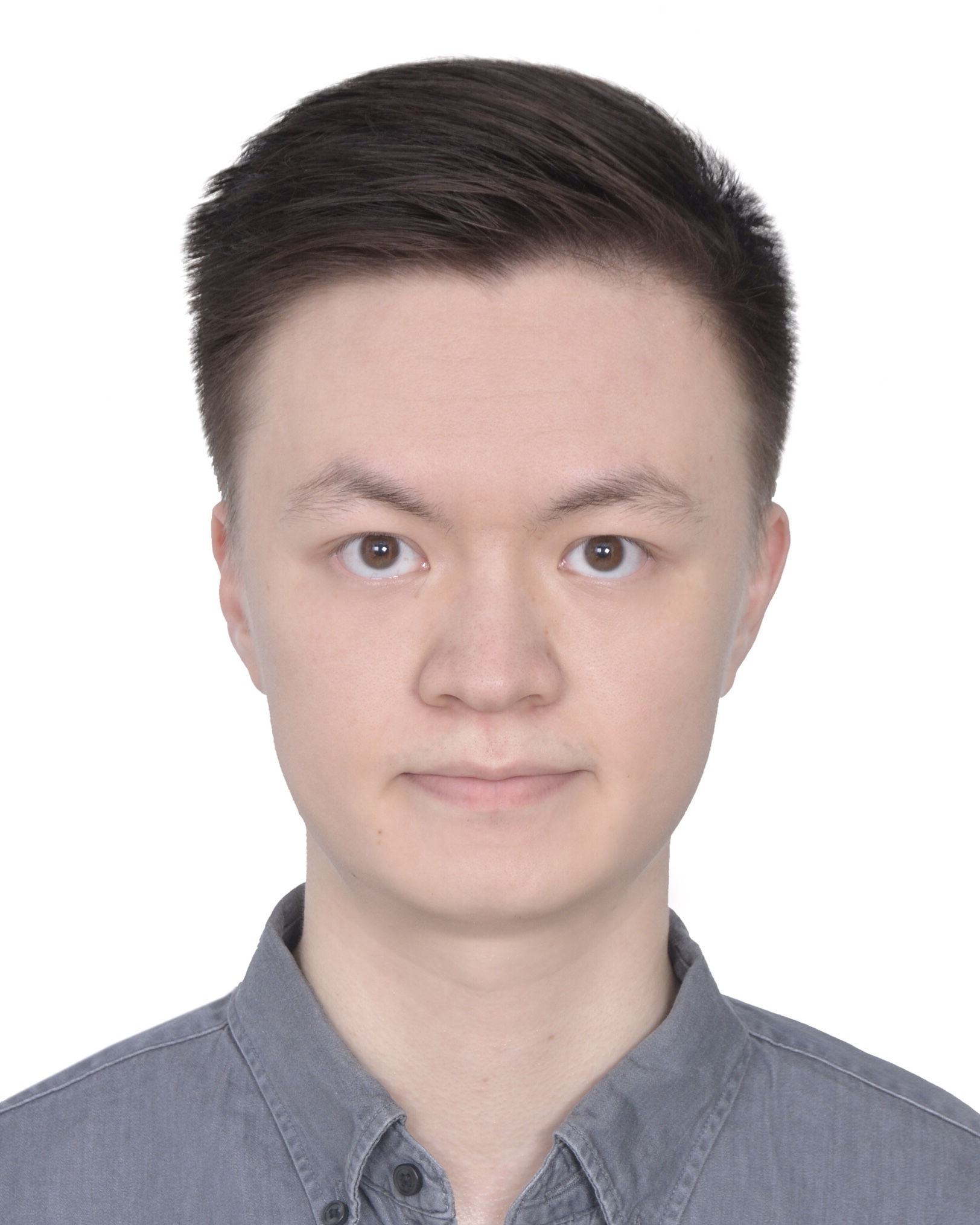 Dongfang Guo, PhD
Dongfang Guo, PhD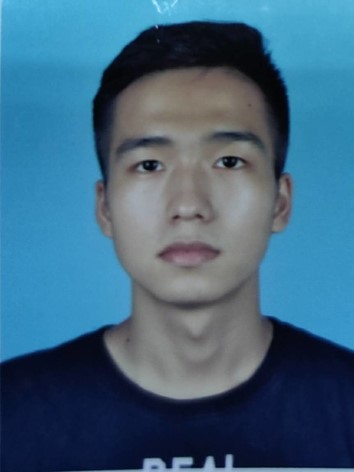 Yimin Dai
Yimin Dai Yuting Wu
Yuting Wu Zimo Ma
Zimo Ma Yihan Xu
Yihan Xu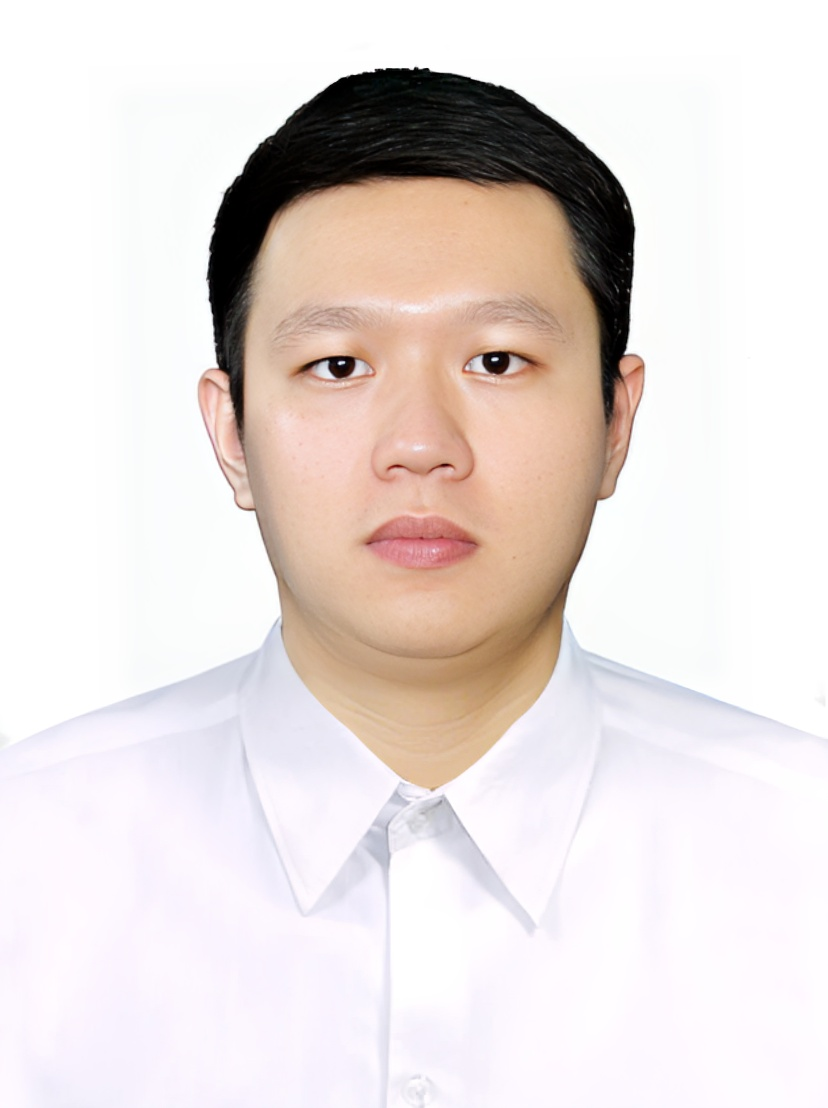 Duc Phuc Nguyen
Duc Phuc Nguyen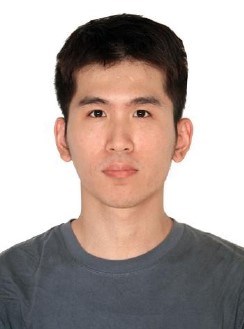 Ziqun Chen
Ziqun Chen Minghao Li
Minghao Li Gaole Dai
Gaole Dai Andreas Kuster
Andreas Kuster Manjodh Singh
Manjodh Singh Xin Yuan, PhD
Xin Yuan, PhD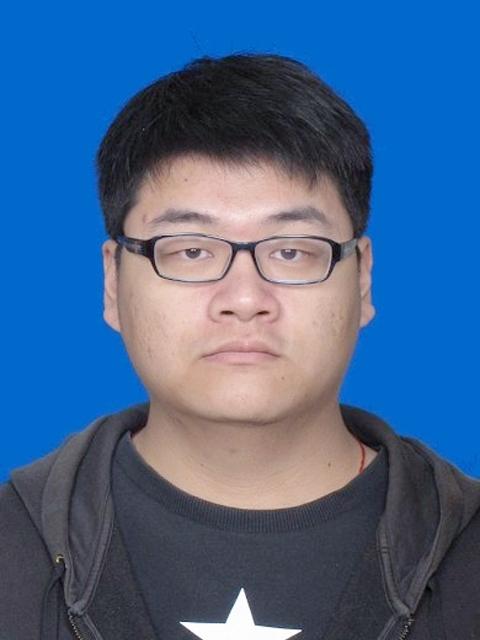 Weiyi Lv
Weiyi Lv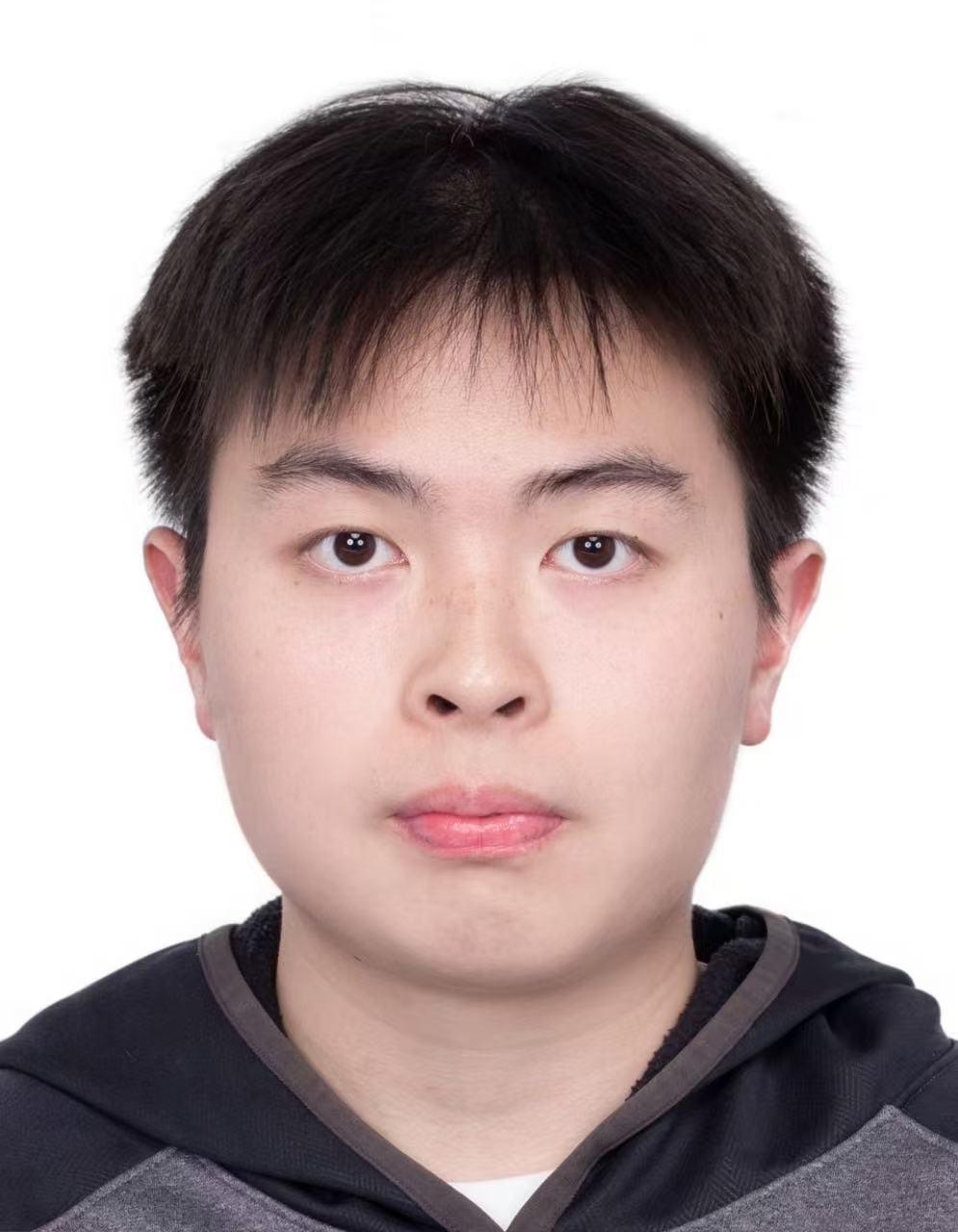 Chengbin Lei
Chengbin Lei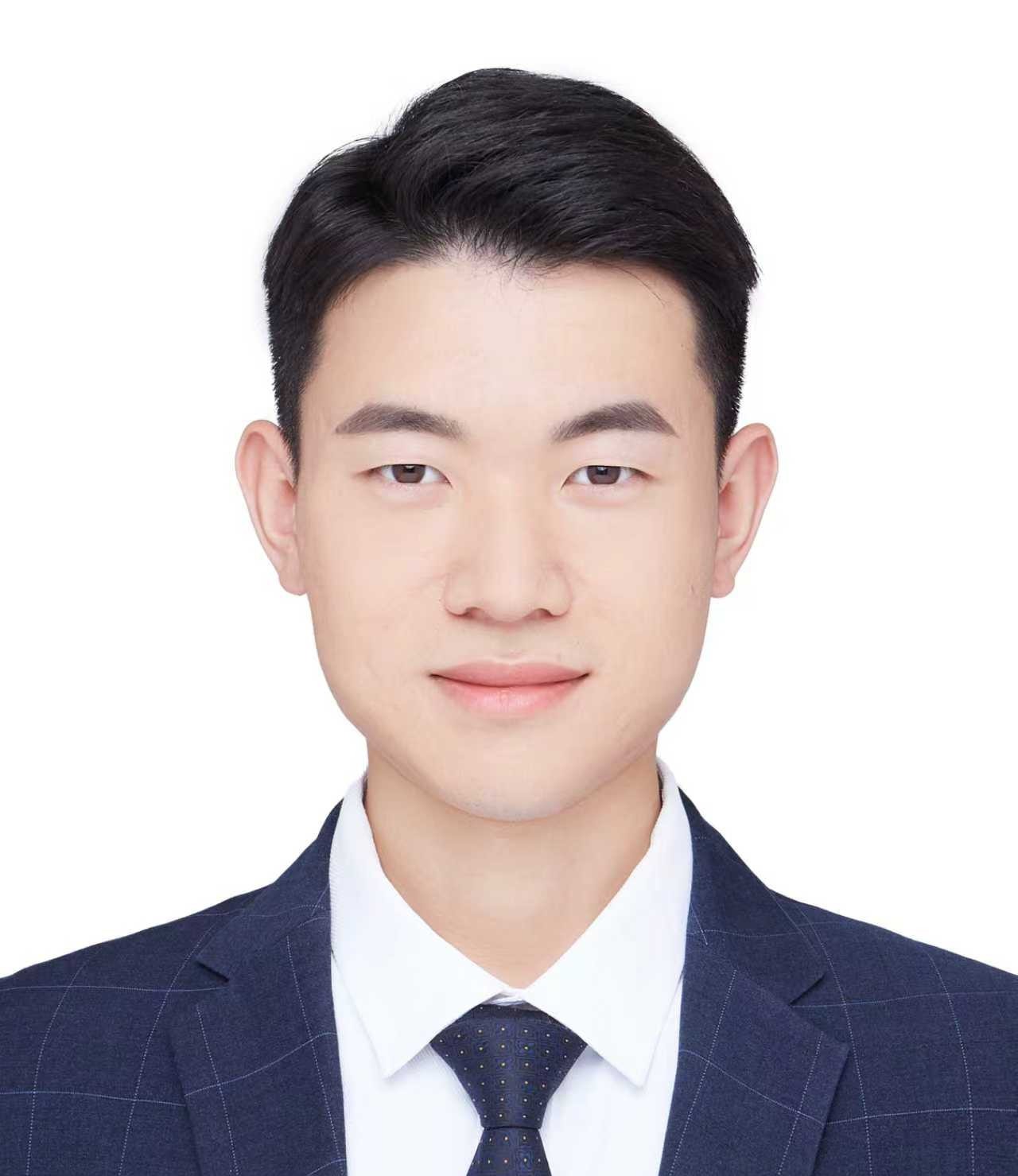 Yujie Peng
Yujie Peng